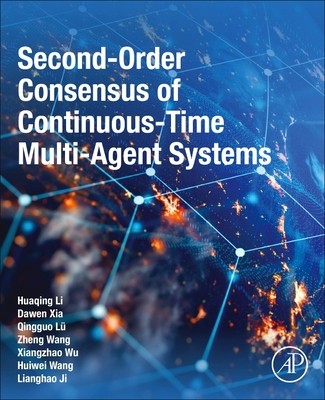
- We will send in 10–14 business days.
- Author: Huaqing Li
- Publisher: Academic Press
- ISBN-10: 032390131X
- ISBN-13: 9780323901314
- Format: 19.1 x 23.5 x 1.1 cm, minkšti viršeliai
- Language: English
- SAVE -10% with code: EXTRA
Second-Order Consensus of Continuous-Time Multi-Agent Systems (e-book) (used book) | bookbook.eu
Reviews
Description
Second-Order Consensus of Continuous-Time Multi-Agent Systems focuses on the characteristics and features of second-order agents, communication networks, and control protocols/algorithms in continuous consensus of multi-agent systems. The book provides readers with background on consensus control of multi-agent systems and introduces the intrinsic characteristics of second-order agents' behavior, including the development of continuous control protocols/algorithms over various types of underlying communication networks, as well as the implementation of computation- and communication-efficient strategies in the execution of protocols/algorithms. The book's authors also provide coverage of the frameworks of stability analysis, algebraic criteria and performance evaluation.
On this basis, the book provides an in-depth study of intrinsic nonlinear dynamics from agents' perspective, coverage of unbalanced directed topology, random switching topology, event-triggered communication, and random link failure, from a communication networks' perspective, as well as leader-following control, finite-time control, and global consensus control, from a protocols/algorithms' perspective. Finally, simulation results including practical application examples are presented to illustrate the effectiveness and the practicability of the control protocols and algorithms proposed in this book.
EXTRA 10 % discount with code: EXTRA
The promotion ends in 23d.07:20:12
The discount code is valid when purchasing from 10 €. Discounts do not stack.
- Author: Huaqing Li
- Publisher: Academic Press
- ISBN-10: 032390131X
- ISBN-13: 9780323901314
- Format: 19.1 x 23.5 x 1.1 cm, minkšti viršeliai
- Language: English English
Second-Order Consensus of Continuous-Time Multi-Agent Systems focuses on the characteristics and features of second-order agents, communication networks, and control protocols/algorithms in continuous consensus of multi-agent systems. The book provides readers with background on consensus control of multi-agent systems and introduces the intrinsic characteristics of second-order agents' behavior, including the development of continuous control protocols/algorithms over various types of underlying communication networks, as well as the implementation of computation- and communication-efficient strategies in the execution of protocols/algorithms. The book's authors also provide coverage of the frameworks of stability analysis, algebraic criteria and performance evaluation.
On this basis, the book provides an in-depth study of intrinsic nonlinear dynamics from agents' perspective, coverage of unbalanced directed topology, random switching topology, event-triggered communication, and random link failure, from a communication networks' perspective, as well as leader-following control, finite-time control, and global consensus control, from a protocols/algorithms' perspective. Finally, simulation results including practical application examples are presented to illustrate the effectiveness and the practicability of the control protocols and algorithms proposed in this book.


Reviews